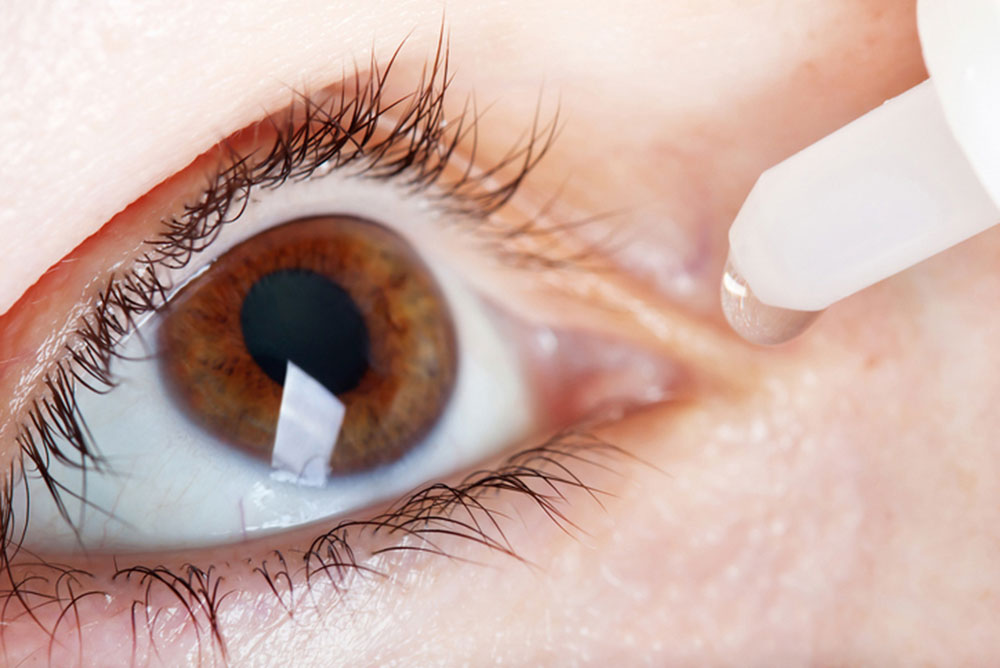
iStock
JENNIFER ANNISTON has it, and she talks about it on TV. She’s not alone; everyone is talking about it. Dry Eye Syndrome (DES), it turns out, is one of the most common eye problems affecting Americans—up to 15% of those over age 65 (compared to 5% among ages 30 to 40); and one in five women (versus one in 10 men).
DES, also called keratoconjunctivitis, includes decreased tear secretion, production of poor-quality tears and/or accelerated evaporation of tears—associated with swelling around and on the surface of the eye. If left untreated, DES can lead to abnormalities in vision.
Dry eyes can be part of an allergic reaction—with complaints rising highest alongside pollen counts in April, and falling to the lowest levels in midsummer. Teasing out the cause, however, can be difficult, and allergy treatments like antihistamines and decongestants can make dry eyes worse.
J.B., a woman in her mid-60s, uses a combination of remedies that target both possibilities: for allergies, Alaway drops along with Zyrtec in the morning; and for symptoms of DES, Systane Ultra drops at other times of day.
Among the causes of DES: medications that have the side effect of reducing tear secretion—anxiety and pain relievers, as well as antihistamines and decongestants; and air—dry and windy air; high altitude and desert air; airplane cabin air and air-conditioning.
The prevalence is increasing as Americans age and spend more time on video display terminals (VDT) like computers and phones. Normal tear flow adjusts to changes in both environmental conditions and blinking rate—typically about 12 blinks per minute. Blinks decline during VDT use.
Another common cause, the immune disorder Sjogren’s syndrome, occurs most often in women over 40 and is identified by its most prominent symptoms: dry eyes and mouth. Dry eyes can result from other immune-related conditions like rheumatoid arthritis, as well as from deficiencies in vitamin A and thyroid.
Three layers of the eye’s “tear film”—fatty oils, water, and mucus—protect eyes from infection and smooth their surface. Watery eyes, caused by both allergies and DES, can mean poor-quality tears that are blinked away so quickly they don’t remain in the eyes long enough to keep them moist. The same sequence occurs when eye irritants produce tears that overflow and look like crying—but fail to soothe the eyes—as do actual crying tears.
Eyelid inflammation, which can keep glands from secreting sufficient oil, has one of the easiest fixes: frequent and gentle washing with a warm, wet washcloth, or adding a mild soap or baby shampoo. Antibiotics can also help—either pills or in eyedrops or ointments.
Tear “supplements” or artificial tears like Systane can be applied several times a day as needed. When these don’t help, a tiny rice-sized insert placed under the lower eyelid releases the same ingredients used in eyedrops. Alternatively, to reduce tear loss, tiny silicone plugs can be used to block tear ducts.
A quick remedy for persistent inflammation causing dry eyes is steroid drugs, but these can’t be taken over a long period without side effects. NSAIDs can also reduce inflammation and discomfort. Until recently, the only prescription drug given over long periods was the immune-suppressant cyclosporine (Restasis), which decreases swelling to allow for increased tear production. (Remember those ads from 2013?) Because Restasis can take several months to begin working and has side effects like burning and stinging, only around 15% of patients report “significant relief.” A second drug that was approved in 2016, Xiidra, can improve symptoms in around two weeks and has been “well-tolerated,” meaning side effects are less cumbersome. The short time since its approval, however, means long-term assessments are not yet available.
Meanwhile, J.B. is trying another option, supported by little research but by many personal anecdotes: a break from alcohol. In a small Korean study of 20 men with healthy eyes, half drank about two beers over a two-hour period—considered a “small” amount—after which alcohol was detected in the tears of all ten. By the next morning, although all traces of alcohol were gone from the tears, they remained altered in various ways—such as shortened tear break-up time—that could result in drier eyes.
Red wine is blamed for the worst effects—which may be assuaged by matching one glass of water for every one of wine. Coffee, on the other hand, has been linked to improvement of dry eye symptoms as have rich-in-vitamin-A foods like sweet potatoes and carrots.
Among practical steps: direct hair dryers, car heaters and fans away from the eyes; wear goggles to protect the eyes when working outdoors, especially during high winds or allergy season; use humidifiers to help moisten the air indoors. Computer screens should be placed below eye level, so eyes don’t need to be opened wide for reading.
To keep tears spread over the eyes, take periodic breaks by closing the eyes for a few minutes or blink repeatedly for a few seconds. Or there’s always the brief nap.
—Mary Carpenter
Read more well-being posts here.
